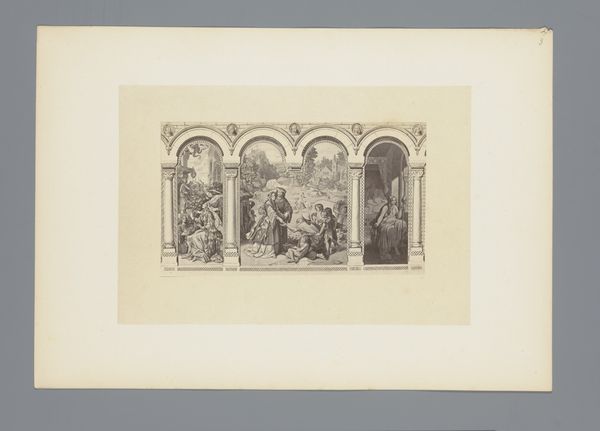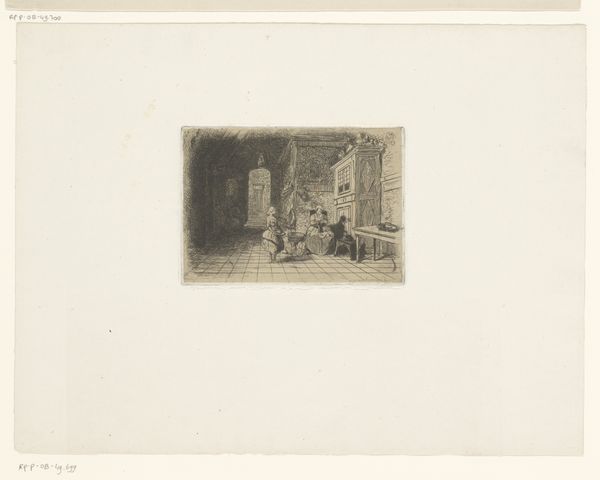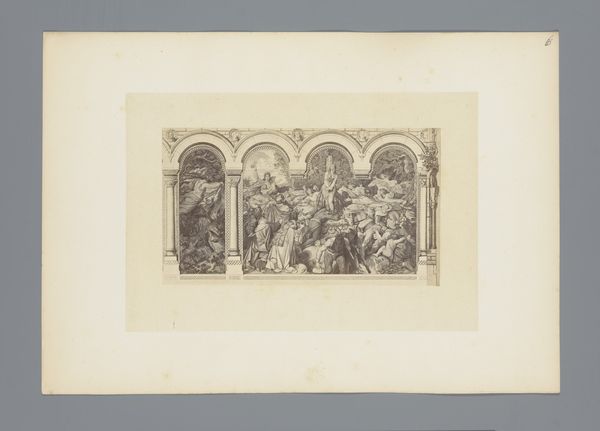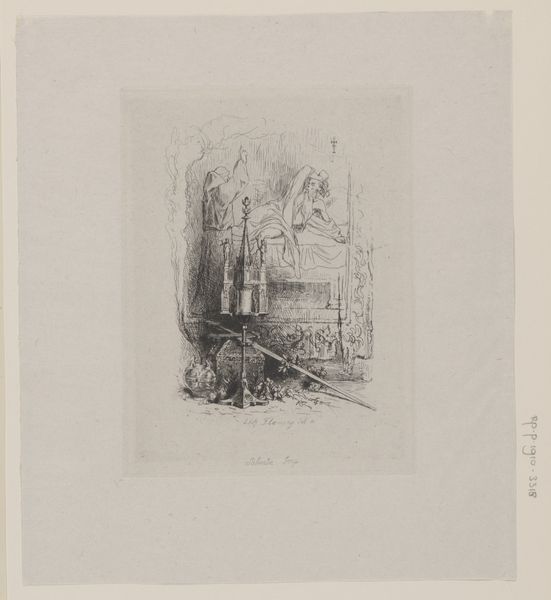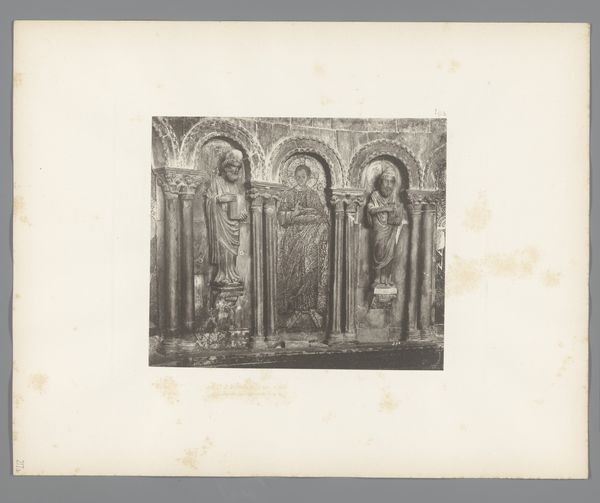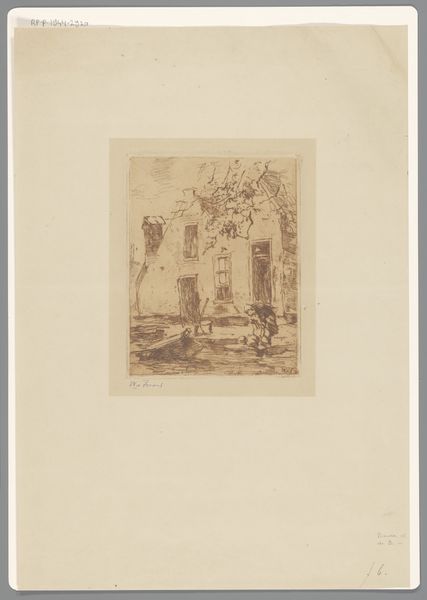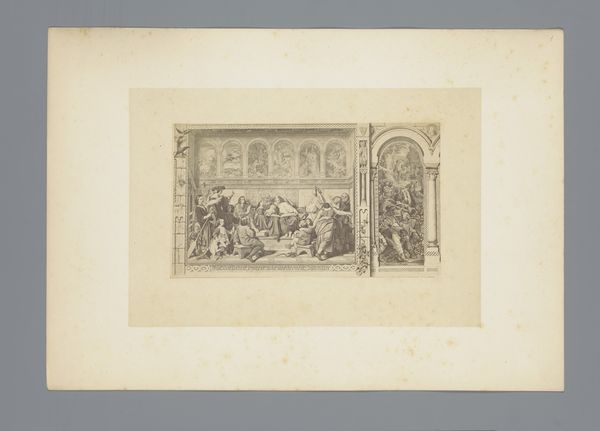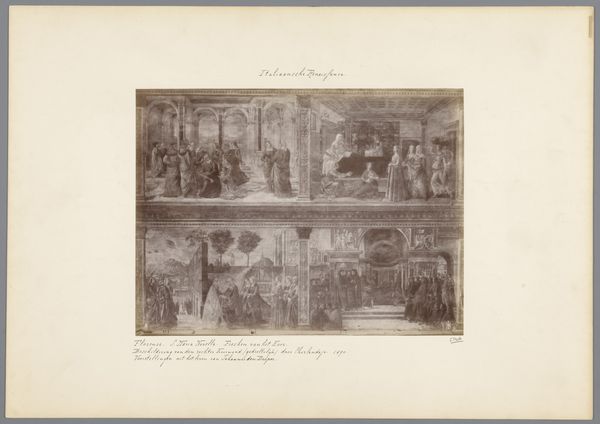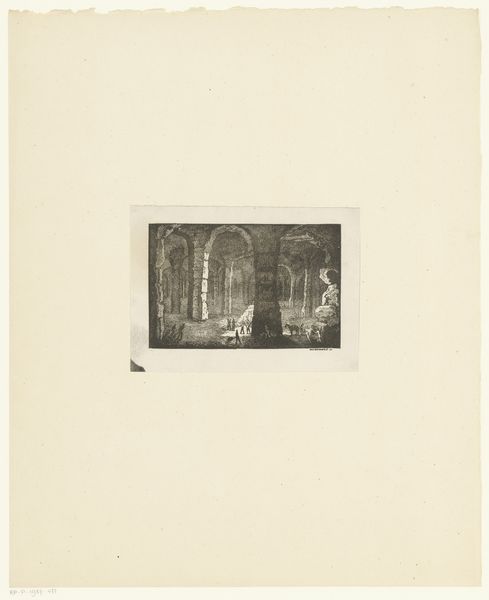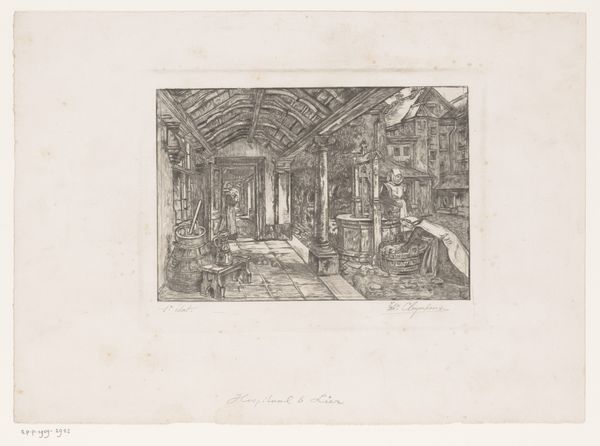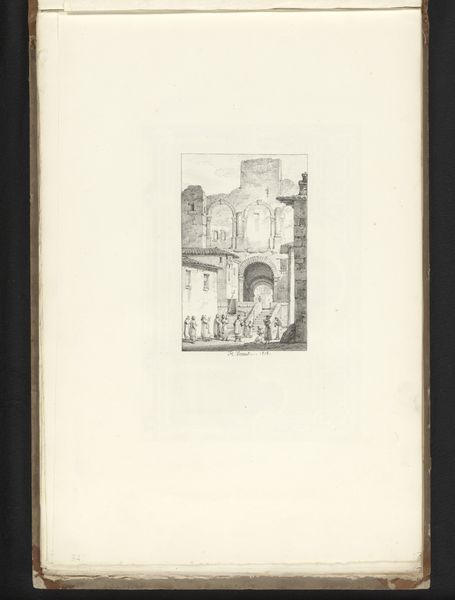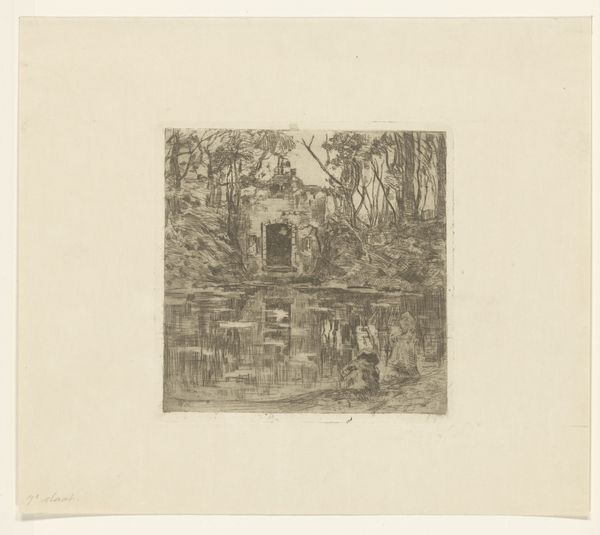
Dimensions: height 130 mm, width 154 mm
Copyright: Rijks Museum: Open Domain
Curator: Simon Fokke created this etching in 1772, it is titled "Baptism of Hereditary Prince William I of the Netherlands". It resides here at the Rijksmuseum. Editor: There's an impressive austerity in the architecture depicted, given that it represents such a jubilant occasion. The precision of the line work suggests a real commitment to documenting every detail of the scene. Curator: Indeed, we should consider the function of such a print. It commemorates the birth of a future ruler but it also legitimizes the monarchical line by demonstrating a performance of power dynamics in action. This visual declaration of inheritance and divine right reinforces social order. Editor: I agree that prints have a social function, operating as tools. Let’s focus for a second on how this etching actually came to be. Look closely and you will notice the meticulous network of lines that construct this scene. You have to recognize the amount of time and skill that went into producing that plate in order to reproduce these images and disseminate them amongst the public. Curator: This act of dissemination is quite important. Etchings like these weren't just pretty pictures; they were critical tools in shaping public perception, circulating political ideologies among the elite, and informing a populace. It begs the question of what narrative is presented here, and who is absent or marginalized within the frame? How does Fokke visually reinforce the exclusion of women, perhaps, even though the event centres around childbirth and motherhood? Editor: A close look reveals how the figures become textural components almost, blending into the architecture itself. Are we to interpret this as the physical bodies become structural to power and social mobility in the context of the Church and crown? Curator: Absolutely! Power becomes a visual spectacle, reinforcing hierarchy in its very depiction. Even in this "commemorative" image, one gets a clear sense of the social stratifications upheld by the royal ceremony, but this historical event and the social context of this work helps understand today's cultural perception of elitism. Editor: Ultimately, looking at the techniques employed in making the work—etching and printing with precise lines—makes us also ponder today's labor, which also plays out as an important aspect of these narratives we keep analyzing to relate it to current socio-economical affairs. Curator: Yes, art can bridge gaps and provoke thoughts on present dynamics! Editor: It certainly makes us reflect upon today's ever-evolving values!
Comments
No comments
Be the first to comment and join the conversation on the ultimate creative platform.

